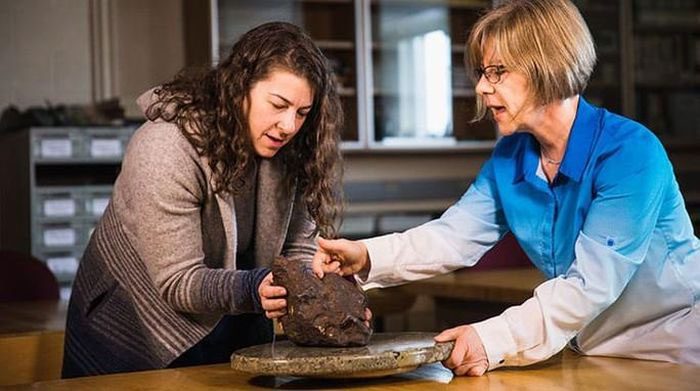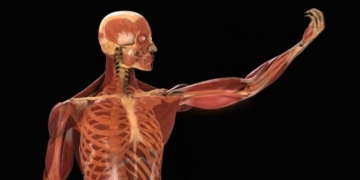According to Science Alert, it is surprising that both owners were aware that the 10kg rock was a meteorite but did not realize its significant value. They simply thought the rock was quite handy for propping open the shed door, and it remained in that position for over 80 years.
It wasn’t until 2018 that David Mazurek, the current owner of the farm, considered having this peculiar doorstop evaluated after seeing many people still buying and selling small meteorite fragments for quite a bit of money.

Extraterrestrial treasure in Michigan being studied in a laboratory – (Photo: CMU).
Geologist Mona Sirbescu from Central Michigan University (CMU), who was asked by Mazurek to assess the rock, described it as “the most valuable specimen I have ever encountered in my life, both financially and scientifically.”
Testing results showed that it is a very rare meteorite, classified as a nickel-iron meteorite, with a nickel content of up to 12%. According to Mazurek, he purchased this farm, located in Edmore, Michigan, in 1998.
When the previous owner showed him around, he mentioned that the strange shed doorstop was a meteorite. The previous owner and his father had directly witnessed this extraterrestrial object fall one night in the 1930s, creating a tremendous noise upon landing.
The next morning, the father and son saw the impact crater and a trench left by the meteorite’s landing. They discovered the rock was still warm and decided to use it to prop open the shed door.
The previous owner told Mazurek that since the meteorite was part of the property, it rightfully belonged to him after buying the farm.
Mazurek continued to use this treasure as a doorstop for the shed for 30 years, except for a few instances when his son brought it to school to show off to friends.
Scientists are thrilled with the decision of the farm owner, and Mazurek is equally pleased, as it is an object of great scientific value.
Mazurek sold his “doorstop” from outer space for $75,000 to the Abrams Planetarium at Michigan State University (USA). Ten percent of the proceeds were donated to the Earth and Atmospheric Sciences department at CMU, where the scientist identified the meteorite.




















































